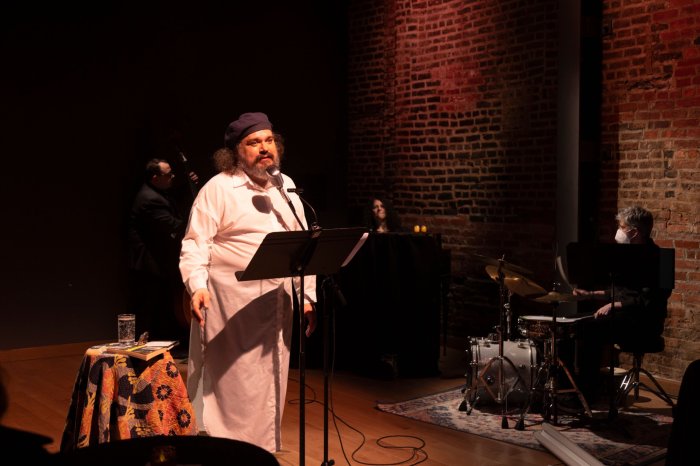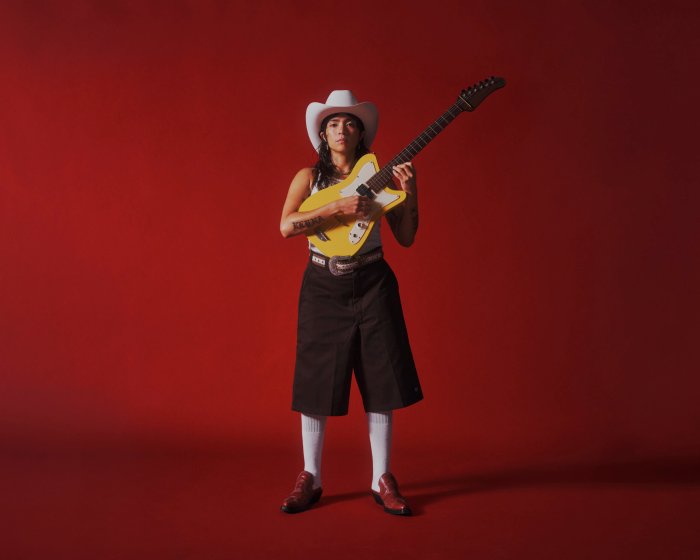Ode to love delivers anxious dialogue
Oh, if only he knew. If only Pintauro knew what depth of neurotic obsession he was revealing in his series of short plays that make up an evening called What I Did For Love. It’s apparent that Pintauro thinks he is exposing a lot of things: the vicissitudes of love, the pain that doesn’t go away with fame and success, the insatiable desire of a lover or an actor for love and adoration, and the creative yearning of “artists” to create something true.
All of these desires are on view at one moment or another in the lovely (there’s no better word), old-fashioned theater at Guild Hall in East Hampton where the play is being performed. Also on view are a lot of Mr. Pintauro’s other concerns, many of which are not flattering, original, or even very interesting. But more on that later.
There are reasons to tear yourself away from the beach, barbecue, or cocktail party for the two hours of What I Did For Love. First is the John Drew Theater itself. A jewel box of a theater, it seats no more than 150 people and was designed to appear like the inside of a circus tent. It’s pretty cool: an urban, architectural wonder inside a deceivingly banal shell.
Second is Catherine Curtin, the actress who created the role of Janis Joplin in Love, Janis—still enjoying a successful run in the Village. Curtin was the speaking Janis, and anyone who saw her was impressed by her physical commitment to the part. In What I Did For Love, Curtin plays several characters (there are only three other actors—Larry Pine, Patricia Randell, and Stephen Wolfert—so they switch parts a lot), two of which become the most memorable of the evening. In one she plays a bus driver in upstate New York who meets her rich ex-boyfriend and his new girlfriend for dinner; the other is as an actress who follows her boyfriend from New York to L.A., hates it, but then learns to love it and someone else by the time the old boyfriend is ready to give up L.A. and move back.
Curtin doesn’t reveal a huge range of emotion beyond complete frustration. Her gravelly Janis-voice works well for frustration. At least she’s in the moment. Of all the actors she seemed the only one yet comfortable enough with the play’s material to lose herself, to disappear on stage and become someone else entirely. (It should be noted that disappearing on this stage isn’t easy because there is less than no set. The few hideously painted props are ultimately so distracting that they are worse than if there had been no set at all and the actors had to mime the whole thing.)
The third and final reason to see this play is Pintauro’s dialogue. The man has an ear for the way humans speak: fast, slow, nicely, aggressively, passively, silently, and everything in between. There are points in the play where it really is just two characters on stage talking and the world around them becomes magical. One of these times is when Curtin tries to reconcile her mixed emotions with her old boyfriend while he is trying to explain his feelings. In reality, neither is communicating with each other at all.
But that’s about it. There are few other moments in this play worth remembering, unless you are an actor, a playwright, or want to be either. Pintauro’s evening of playlets is naval-gazing drama plain and simple, a personal tirade against critics, an exposé against vain and tortured actors, fantasies about theater, nightmares about theater. Most disappointingly, the evening returns again and again to the tired discussion of the difference between New York and L.A.
This topic is so numbingly omnipresent you’d think Pintauro lived in a 747 that flew back and forth between the two cities and never set down.


































